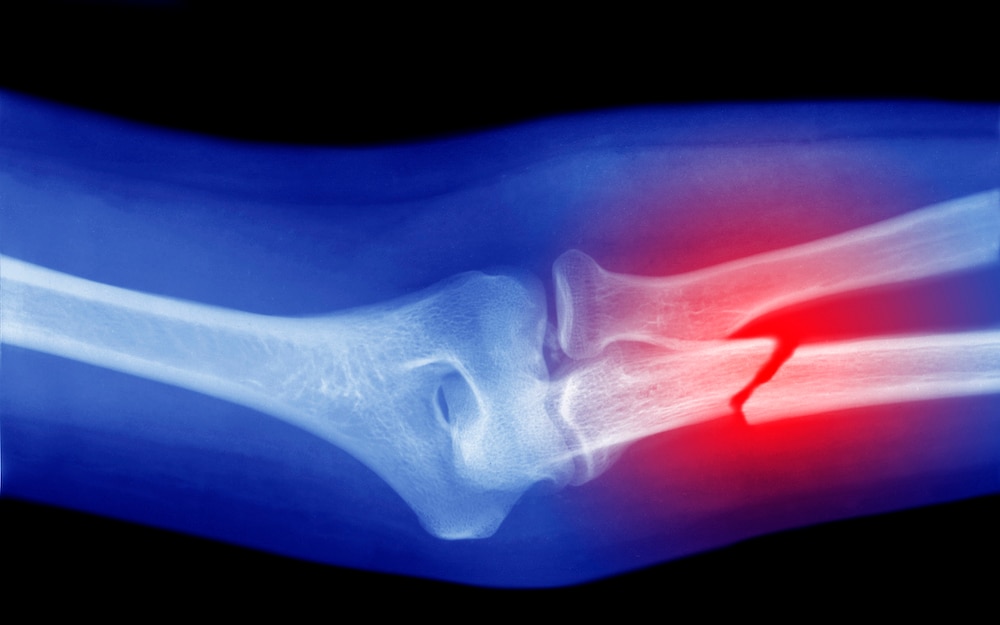Create a free profile to get unlimited access to exclusive videos, sweepstakes, and more!
Broken bones? No problem! Messenger RNA rebuilds bones better than before
Is there nothing mRNA can't do?

Bones are tough. They’ve evolved to take heavy loads and endure intense pressures, and most of the time we’re not even aware our bones are there, producing blood cells and holding this whole operation together. That is until a bone breaks, then we’re suddenly acutely and painfully aware of their existence inside us.
Most of the time, when a bone breaks, they heal nicely without much intervention. Doctors typically step in to set the pieces in the right position, stabilize them, and let the body do its thing. However, if the defect in the bone is large, the body struggles to effectively regenerate bone and increased intervention is needed.
The FDA previously approved the use of BMP-2, a bone growth factor, for use in severe fractures. The results of BMP-2 have historically been minimal, and the high dosage required can result in significant side effects, making it a less than ideal solution.
Researchers from the Mayo Clinic, and colleagues from other institutions, have now developed an alternative therapy using messenger RNA, the technology which has made headlines in recent years for its use in COVID-19 vaccines. Their findings were published in the journal Science Advances.
This new therapy ultimately uses the same BMP growth factors as the prior therapy, with the main difference being the route of delivery. While the previous therapy delivered BMP-2 intramembraneously, the new mRNA protocol travels along endochondral paths. This is important because long bones develop and heal through endochondral ossification. In essence, the new therapy is more effective because it’s delivering the needed boosts to the body’s front door, utilizing the body’s natural development and healing processes.
Messenger RNA takes its name from its function. It serves as the intermediate step between a gene and the protein it encodes. It is essentially a set of instructions telling the body to manufacture a particular product. In the case of COVID-19 vaccines, mRNA works by telling our cells to produce the spike protein which exists on the surface of the virus. Once those proteins are produced, the immune system responds, creating antibodies. This new therapy works similarly by telling the body to produce BMP-2 proteins, instigating new bone growth. Instead of an immune response, you’re getting bones which are better, faster, and stronger than prior interventions.
Importantly, unlike other gene therapies, mRNA isn’t actually changing your DNA. Once it delivers the protein encoding instructions to the cell, it rapidly degrades and ultimately vanishes from the body. In the study’s experiments, scientists were unable to detect the presence of mRNA in the body after 10 days.
To test the therapy, scientists used young, healthy, male rats with no other significant health concerns. Injury to the femoral bone was introduced to the rats using a bridging plate to create a large defect sufficient that, if it were left untreated, it would not heal. Similar injuries in humans often require amputation of the limb. Next, a collage sponge containing the messenger RNA was implanted. That sponge served as a scaffold for both the delivery of RNA and bone growth.
They found that introducing mRNA in this way can heal large segmental defects in bones by inducing the production of growth factors over the course of only a handful of days. While the mRNA vanished from the body relatively quickly, it was sufficient to jumpstart bone regeneration.
As a result, it appears that only one treatment is needed in order to regrow bones. Moreover, when compared with traditional BMP-2 therapy, it can be administered at comparatively low doses, is cheaper, and exhibits no side effects.
However, the nature of the study was limited to healthy, young, male rats. As such, the results are likewise limited in scope. It could be that it won’t prove as effective under other circumstances, such as bone defects caused by tumors.
Future experiments will investigate its efficacy in female rats and in larger animals like pigs and sheep, and eventually human trials.
It seems we find ourselves at the beginning of a medical revolution as a result of mRNA technologies. How the technology evolves over time remains to be seen but, at least for now, we know it has good bones.


























